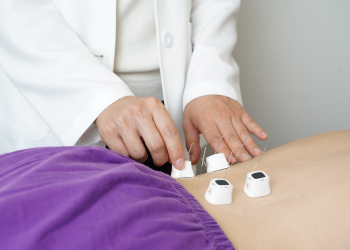Contents
5 Ways to Use a Hot Compress for Joint Relief
Have you ever felt that familiar ache in your joints after a long day? Whether it’s from arthritis, an old injury, or just the wear and tear of life, joint pain can be a real downer. But here’s a little nugget of wisdom that some folks might overlook: a hot compress can be a game-changer when it comes to finding relief.
So, let’s dive into the world of hot compresses and explore five effective ways to use them for joint relief.
1. Basic Application: The Classic Hot Compress
How to Use It:
The simplest way to apply a hot compress is to use a clean towel soaked in hot water. Here’s a quick step-by-step:
- Soak a towel in hot (but not scalding) water.
- Wring it out to remove excess water.
- Fold it into a manageable size and place it on the affected joint.
- Leave it on for about 15-20 minutes.
Pros:
- Easy to do at home.
- No special equipment required.
- Can be done multiple times a day for relief.
Cons:
- If the water is too hot, it can cause burns.
- Not suitable for acute injuries (like sprains) where swelling is present.
2. Microwaveable Heat Packs
How to Use It:
If you’re looking for something a bit more convenient, microwaveable heat packs are a great option. Here’s how to make the most of them:
- Choose a heat pack that can be safely microwaved (usually filled with rice or flaxseed).
- Heat it according to the package instructions (usually around 1-2 minutes).
- Wrap it in a thin cloth to avoid direct contact with the skin.
- Apply it to the sore joint for about 15-20 minutes.
Pros:
- Reusable and easy to store.
- Provides consistent heat.
- Portable for use at work or while traveling.
Cons:
- Overheating can damage the pack.
- Some people may find them too heavy.
3. Hot Shower or Bath
How to Use It:
Sometimes, the simplest solutions are the best. A hot shower or bath can provide full-body relief. Here’s how to maximize the effect:
- Fill your bathtub with warm water (not too hot to avoid burns).
- Add Epsom salt if desired, as it can help with muscle relaxation.
- Soak for 15-30 minutes, focusing on the joints that need relief.
Pros:
- Provides a full-body experience, which can be relaxing.
- Epsom salt may further enhance relief.
Cons:
- Not everyone has access to a bathtub.
- Can be time-consuming.
4. Herbal Infused Compress
How to Use It:
For a little extra flair, consider using an herbal-infused hot compress. Here’s how to make one:
- Choose herbs known for their anti-inflammatory properties, like ginger or chamomile.
- Boil water and steep the herbs for about 10-15 minutes.
- Soak a towel in the herbal infusion, wring it out, and apply it to the joint.
Pros:
- May enhance the effectiveness of the compress due to the herbs.
- A soothing aroma can add to the relaxation experience.
Cons:
- Requires some preparation.
- Not everyone may appreciate the smell of certain herbs.
5. Electric Heating Pads
How to Use It:
If you want a little more control over your heat application, an electric heating pad can do the trick. Here’s how to use one effectively:
- Plug in the heating pad and set it to a low or medium setting.
- Place it on the affected joint, covering it with a thin cloth if desired.
- Use for 15-30 minutes, adjusting the heat as needed.
Pros:
- Adjustable heat settings provide personalized comfort.
- Can be used while resting or engaging in other activities.
Cons:
- Requires electricity.
- Risk of burns if left on too long.
The Science Behind Heat Therapy
You might be wondering, “Does this really work?” Well, the science says yes! Heat therapy can improve circulation, relax muscles, and alleviate pain. A study published in the Journal of Physical Therapy Science found that heat therapy significantly reduced pain levels and improved joint function in individuals with conditions like osteoarthritis (Bae et al., 2017).
However, it’s important to note that while heat can be beneficial, it’s not a one-size-fits-all solution. Some experts argue that cold therapy may be more effective for certain types of pain, especially right after an injury.
FAQs
1. How often can I use a hot compress?
You can use a hot compress multiple times a day, but it’s best to give your skin a break after about 20 minutes to prevent burns.
2. Can I use a hot compress on swollen joints?
No, it’s generally not advised to use heat on swollen joints. Cold therapy is more appropriate in those cases.
3. Are there any risks associated with hot compresses?
Yes, risks include burns if the compress is too hot or prolonged use without breaks. Always monitor the temperature and time.
4. Can I use a hot compress for arthritis pain?
Absolutely! Many people with arthritis find that heat therapy helps relieve stiffness and improve mobility.
Conclusion
Using a hot compress for joint relief is not just an old wives’ tale; it’s a time-tested method backed by science. Whether you opt for a simple towel soaked in hot water or invest in an electric heating pad, there are plenty of ways to incorporate this technique into your routine. Remember to listen to your body and consult with a healthcare professional if you’re unsure about the best approach for your specific condition.
This article is for educational purposes only and is not a substitute for professional medical advice. Always consult a qualified healthcare provider before making changes to your health routine.
References
-
Bae, S. H., Lee, J. H., & Kim, J. H. (2017). Effects of heat therapy on pain and joint function in patients with knee osteoarthritis: A systematic review and meta-analysis. Journal of Physical Therapy Science, 29(4), 701-708. https://www.jstage.jst.go.jp/article/jpts/29/4/29_jpts-2017-0084/_article
-
Mayo Clinic Staff. (2021). Heat therapy for pain relief: A guide. Mayo Clinic. https://www.mayoclinic.org/healthy-lifestyle/pain-management/in-depth/heat-therapy/art-20045532
-
National Institutes of Health. (2020). Complementary and Integrative Health: Heat therapy. NIH. https://nccih.nih.gov/health/heat-therapy
Get Your FREE Natural Health Guide!
Subscribe now and receive our exclusive ebook packed with natural health tips, practical wellness advice, and easy lifestyle changes — delivered straight to your inbox.















